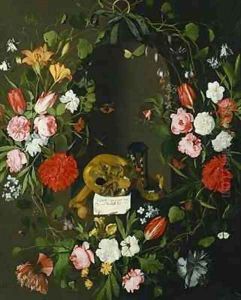J.H. Elers Paintings
Johann Friedrich Böttger was a German alchemist and inventor who is often mistakenly conflated with J.H. Elers, the actual subjects of interest in this inquiry. J.H. Elers, refers to the Elers brothers, John Philip Elers (1664–1748) and David Elers (1668–1727), who were Dutch or German potters active in England at the end of the 17th century and the beginning of the 18th century. They are renowned for their significant contributions to the development of English pottery, particularly for introducing new techniques and high standards of craftsmanship that were influenced by their knowledge of Continental, especially Dutch, stoneware production.
The Elers brothers came to England around 1688, settling in Staffordshire, which was already a well-established center for pottery due to its abundant local supplies of clay, lead, salt, and coal. They kept their techniques secret, employing only a few deaf-mute assistants to prevent the spread of their methods. The brothers are best known for their refined red stoneware, which was inspired by the Chinese Yixing teapots and the contemporary German stoneware. This red stoneware was notable for its fine texture, metallic-like finish, and the detailed molded or carved decorations, often depicting scenes or motifs from Chinese art.
Despite their innovations and the high quality of their work, the Elers brothers faced competition from local potters who eventually learned and copied their techniques. Around 1710, John Philip and David Elers ceased their operations in Staffordshire and returned to the Netherlands. Their influence, however, lasted much longer, as their techniques and stylistic choices were adopted and adapted by other English potteries, most notably by Josiah Wedgwood in the later part of the 18th century. The legacy of the Elers brothers is thus a crucial chapter in the history of English ceramics, marking a period of transition towards industrialization and global influence in pottery and porcelain manufacturing.
